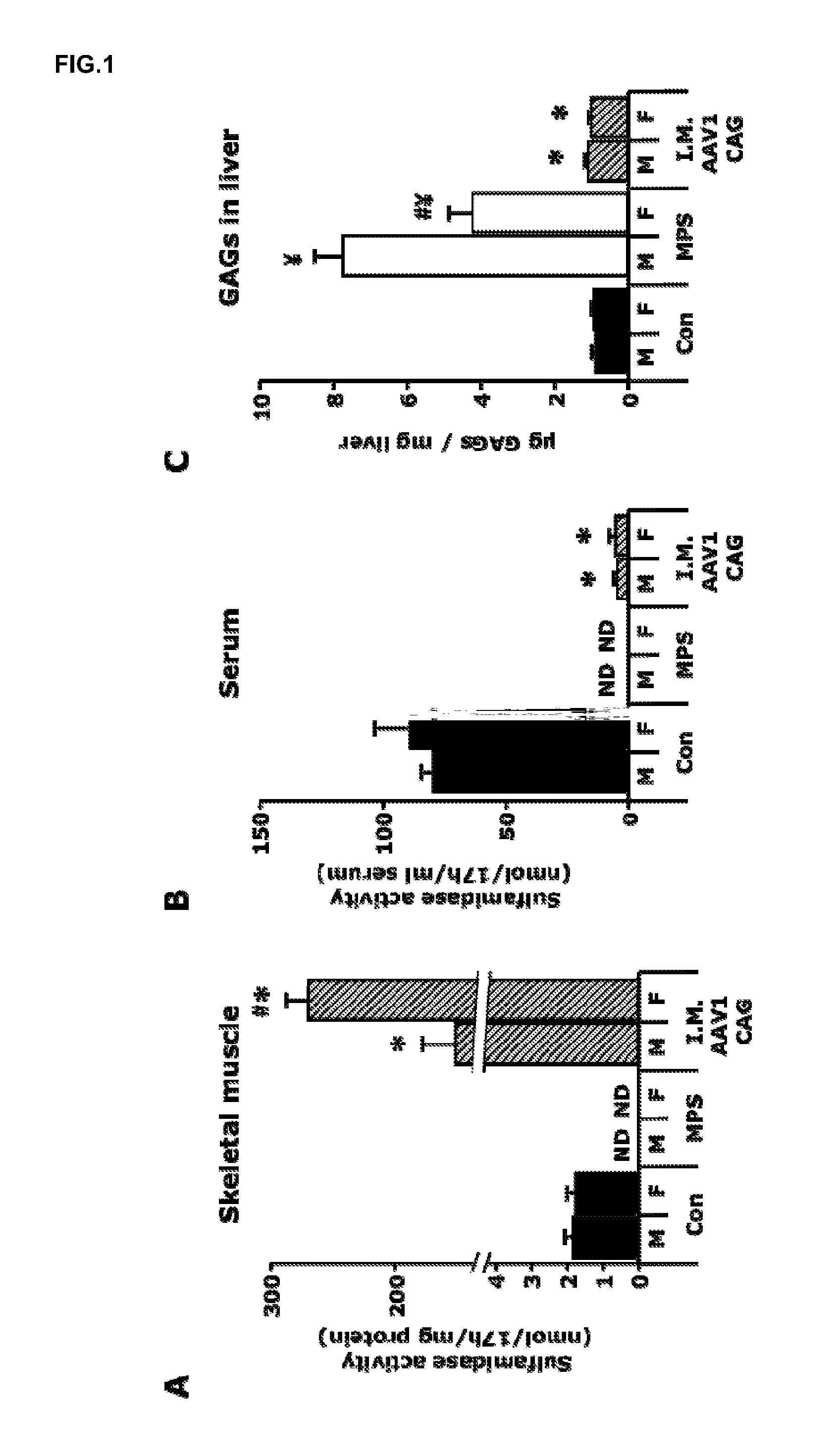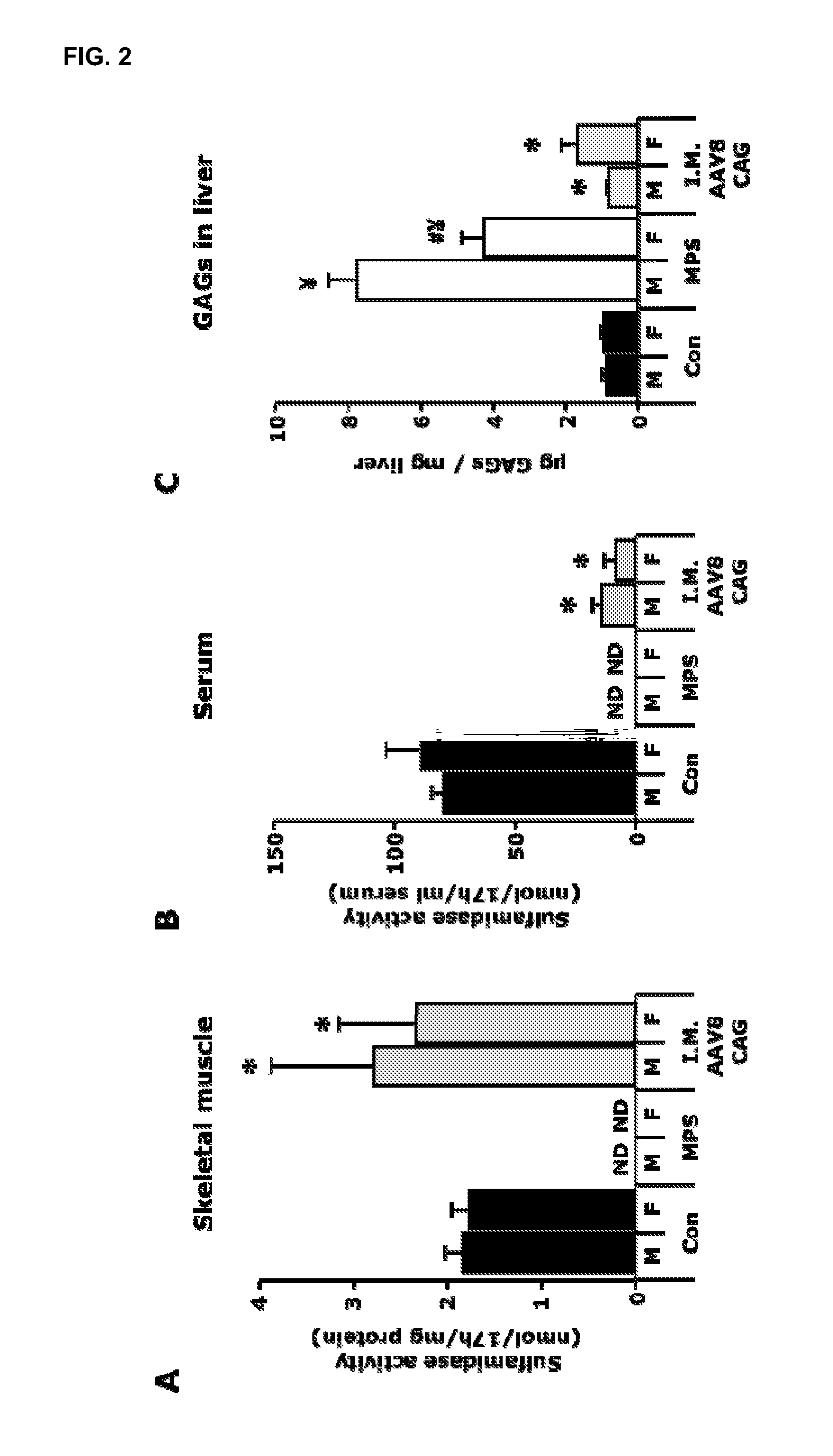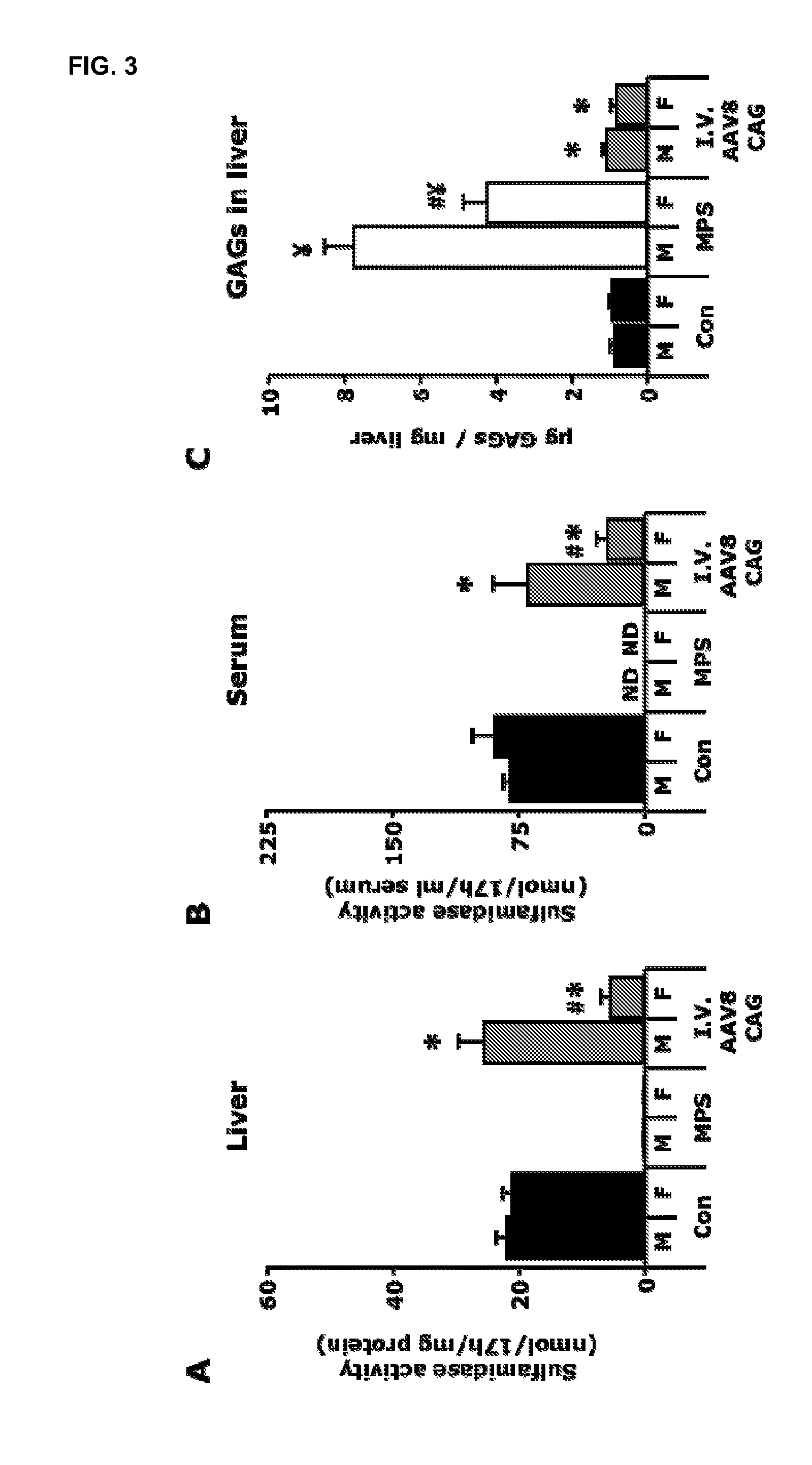Vectors and sequences for the treatment of diseases
a technology of vectors and sequences, applied in the field of vectors, can solve the problems of bone marrow transplantation being inefficient in the treatment of mpsiii patients, particularly affecting the general population, and the death of patients during adolescence, and achieve the effects of stable mrna, higher yields of sulfamidase enzymes, and higher rates
- Summary
- Abstract
- Description
- Claims
- Application Information
AI Technical Summary
Benefits of technology
Problems solved by technology
Method used
Image
Examples
example 1
Intramuscular Delivery of AAV1-CAG-mu-SFMD-WPRE
[0113]A total dose of 1012 vector genomes of the AAV1-CAG-mu-SFMD-WPRE vector was injected into 6 muscles of the hind limbs (quadriceps, gastrocnemius and tibialis anterior from both legs) of 2-month-old male and female MPSIIIA mice.
[0114]Eight months after the administration, the injected muscles displayed high levels of vector-derived sulfamidase expression and activity, but very low levels of sulfamidase activity were observed in serum (6-7% of control mice), suggesting low secretion efficiency from the skeletal muscle. See FIGS. 1A and 1B. In addition, very low but significant vector-derived sulfamidase expression was observed in the liver of these mice, indicating that, at the moment of injection, the vector leaked from the skeletal muscle into the circulation and transduced the liver. Even with the low levels of circulating sulfamidase activity achieved, correction of GAG accumulation was seen in liver, and a significant reduction...
example 2
Intramuscular Delivery of AAV8-CAG-mu-SFMD-WPRE
[0115]A total dose of 1012 vector genomes of the AAV8-CAG-mu-SFMD-WPRE vector was injected into 6 muscles of the hind limbs (quadriceps, gastrocnemius and tibialis anterior from both legs) of 2-month-old male and female MPSIIIA mice.
[0116]Eight months after the administration, the injected muscles displayed sulfamidase activity levels similar to those of a healthy control animal. See FIG. 2A. Low levels of sulfamidase activity were observed in serum (10-15% of control mice). See FIG. 2B. Vector leakage to the liver was also observed, since vector-derived sulfamidase expression and activity was seen in the liver, even at higher levels than in mice treated with intramuscular AAV1. See Example 1. Correction of GAG accumulation was seen in liver and spleen, and a greater reduction was observed in other somatic tissues (heart, pancreas, urinary bladder), but kidney and lungs remained largely uncorrected. See FIG. 2C. No reduction of the GAG ...
example 3
Intravenous Delivery of AAV8-CAG-mu-SFMD-WPRE
[0117]A total dose of 1012 vector genomes of the AAV8-CAG-mu-SFMD-WPRE vector was injected into 2-month-old MPSIIIA mice via tail vein.
[0118]Eight months after administration, the treated males displayed sulfamidase activity in the liver at levels similar to those of control mice, but 4-fold lower in females. See FIG. 3A. Consistently, circulating sulfamidase activity was high in males (similar levels to those of control mice), and lower in females (25% of control mice). See FIG. 3B. Those high levels of circulating sulfamidase were able to correct GAG accumulation in liver, heart, spleen, pancreas and urinary bladder, and significantly reduce it in lungs, but not in kidney. See FIG. 3C for liver GAG quantification. No reduction of GAG storage was observed in the brain.
PUM
| Property | Measurement | Unit |
|---|---|---|
| Fraction | aaaaa | aaaaa |
| Composition | aaaaa | aaaaa |
Abstract
Description
Claims
Application Information
 Login to View More
Login to View More - R&D
- Intellectual Property
- Life Sciences
- Materials
- Tech Scout
- Unparalleled Data Quality
- Higher Quality Content
- 60% Fewer Hallucinations
Browse by: Latest US Patents, China's latest patents, Technical Efficacy Thesaurus, Application Domain, Technology Topic, Popular Technical Reports.
© 2025 PatSnap. All rights reserved.Legal|Privacy policy|Modern Slavery Act Transparency Statement|Sitemap|About US| Contact US: help@patsnap.com



